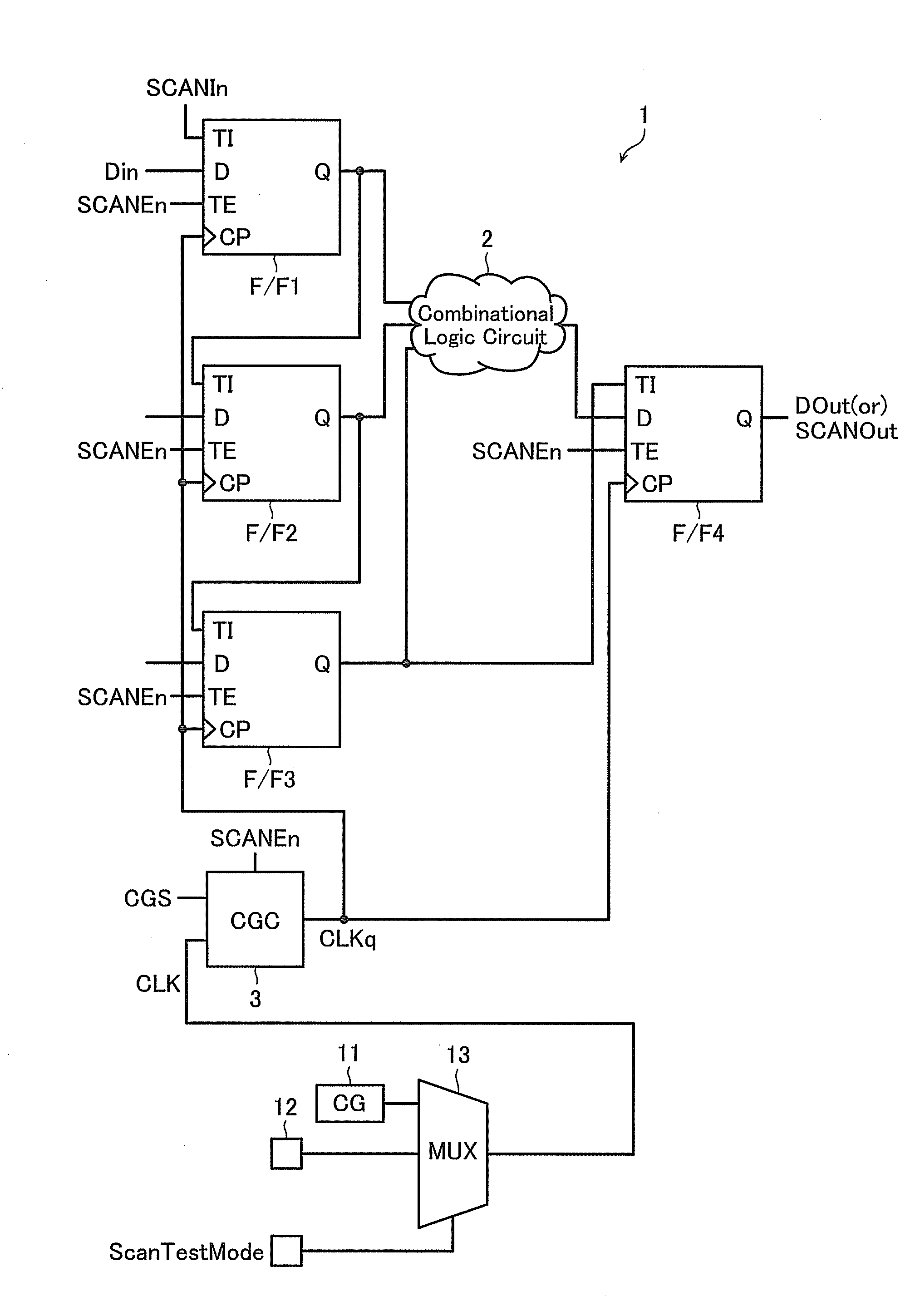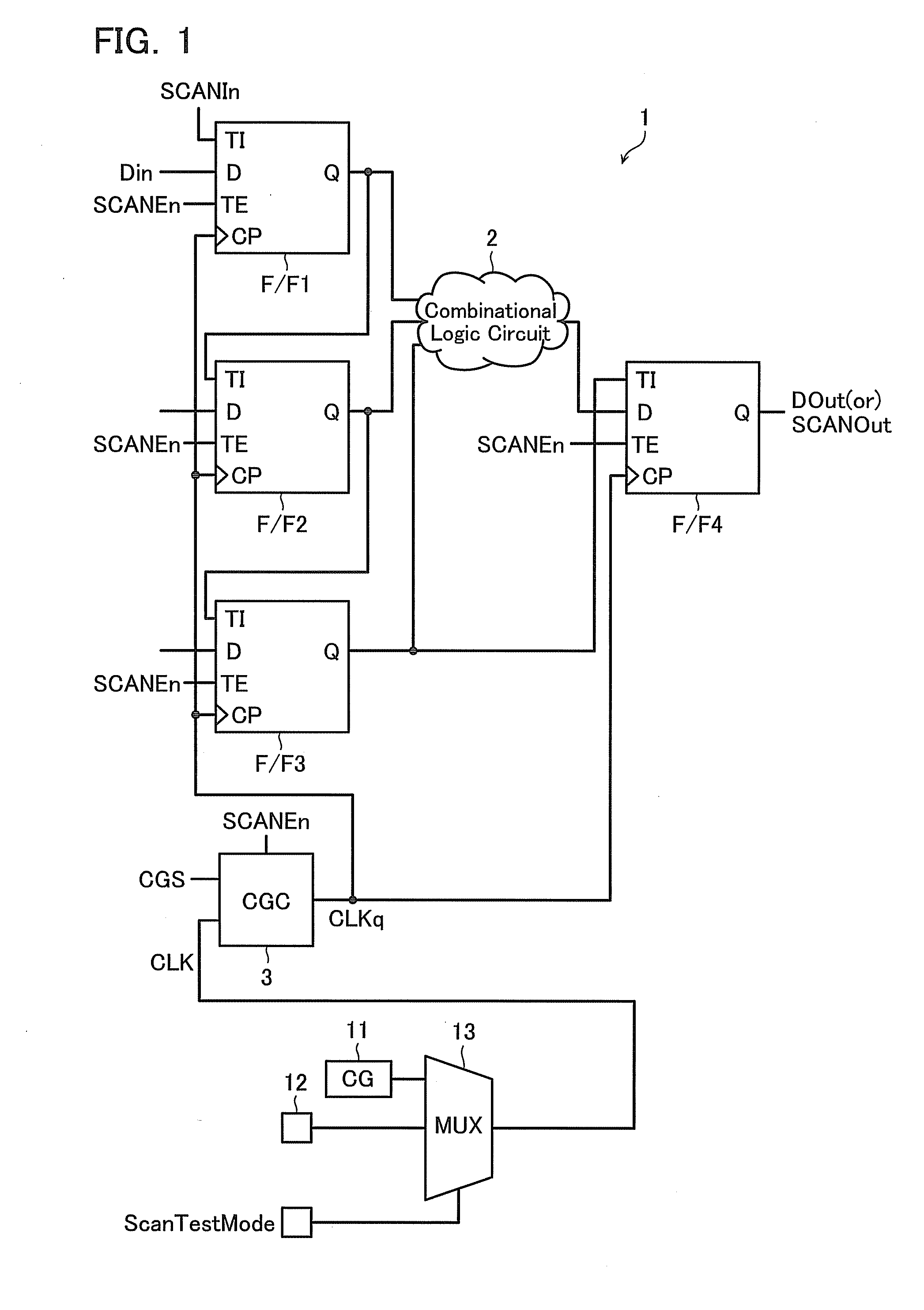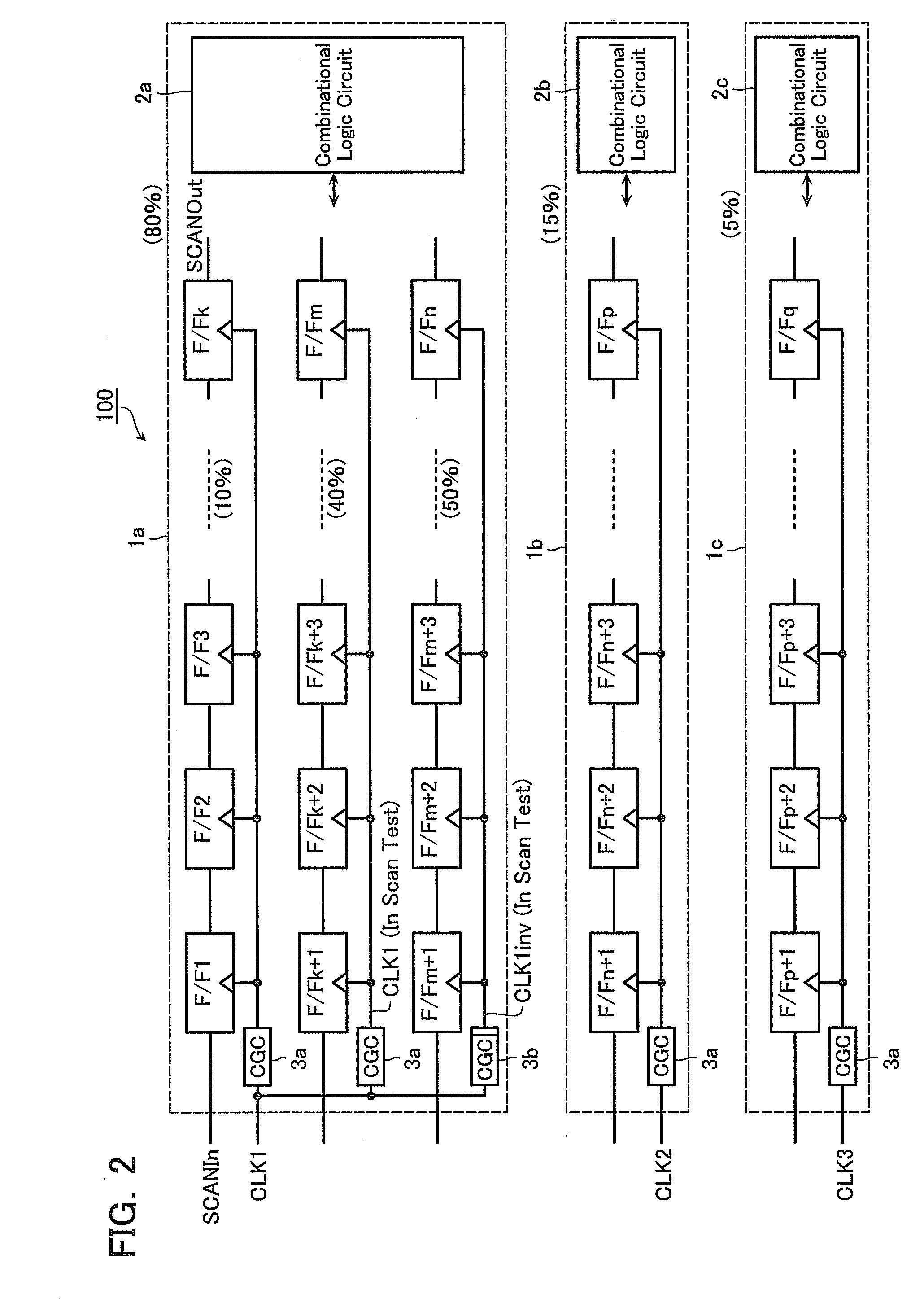Semiconductor integrated circuit and design automation system
a technology of integrated circuit and design automation system, applied in the direction of program control, instruments, error detection/correction, etc., can solve the problems of insufficient countermeasures in restraining instantaneous power, inability to reduce power consumption, and inability to achieve instantaneous power
- Summary
- Abstract
- Description
- Claims
- Application Information
AI Technical Summary
Benefits of technology
Problems solved by technology
Method used
Image
Examples
first embodiment
[0028]A semiconductor integrated circuit according to a first embodiment of the present invention is described with reference to the drawings.
[0029]Prior to description of the first embodiment, an example of a configuration of a general scan chain circuit and combinational logic circuit is explained with reference to FIG. 1. A combinational logic circuit 2 has scantest flip-flops F / F1 to F / F3 disposed on an input terminal side thereof and scantest flip-flop F / F4 disposed on an output terminal side thereof. In addition, these four flip-flops F / F1 to F / F4 are connected in series to constitute a scan chain circuit 1 functioning as a shift register during a scan test.
[0030]That is to say, in ordinary operation, these flip-flops F / F1 to F / F3 temporarily store input data Din inputted to them through data input terminals D, and output output data to the combinational logic circuit 2 through data output terminals Q. In addition, flip-flop F / F4 temporarily stores data outputted from the comb...
second embodiment
[0055]Next, a design automation system according to a second embodiment of the present invention is described with reference to the drawings.
[0056]FIG. 7 is a block diagram showing a configuration of a design automation system in accordance with a second embodiment of the present invention. This design automation system is realizable through a computer and a computer program, and in one example is provided with a netlist storage unit 41 that stores a netlist of the semiconductor integrated circuit to be designed, a circuit design unit 42, and an output unit 43.
[0057]Here, a netlist stored in the netlist storage unit 41 is to include combinational logic circuits, flip-flops, and clock gating circuits.
[0058]The circuit design unit 42 is provided with a counting section 401, a selecting section 402, a substituting section 403, a judging section 404, and a netlist generating section 405. 401 to 405 are realizable also by way of the computer program that is stored in and executed by the ...
third embodiment
[0068]Next, a design automation system according to a third embodiment of the present invention is described with reference to the drawings.
[0069]FIG. 10 is a block diagram showing a configuration of a design automation system in accordance with a third embodiment of the present invention. This design automation system is realizable through a computer and a computer program, and in one example is configured so as to enable automatic design of a semiconductor integrated circuit such as that shown in FIG. 2. The system is configured from an input unit 141, a data storage section 142, a netlist generating section 143, a test pattern generating section 144, and an output section 145. The sections 143 to 144 are realizable also by way of the computer program that is stored in and executed by the computer.
[0070]The input unit 141 is provided to input a selection for inverted clocking described below and other instructions from an operator necessary for the design. The data storage section...
PUM
 Login to View More
Login to View More Abstract
Description
Claims
Application Information
 Login to View More
Login to View More - R&D
- Intellectual Property
- Life Sciences
- Materials
- Tech Scout
- Unparalleled Data Quality
- Higher Quality Content
- 60% Fewer Hallucinations
Browse by: Latest US Patents, China's latest patents, Technical Efficacy Thesaurus, Application Domain, Technology Topic, Popular Technical Reports.
© 2025 PatSnap. All rights reserved.Legal|Privacy policy|Modern Slavery Act Transparency Statement|Sitemap|About US| Contact US: help@patsnap.com



